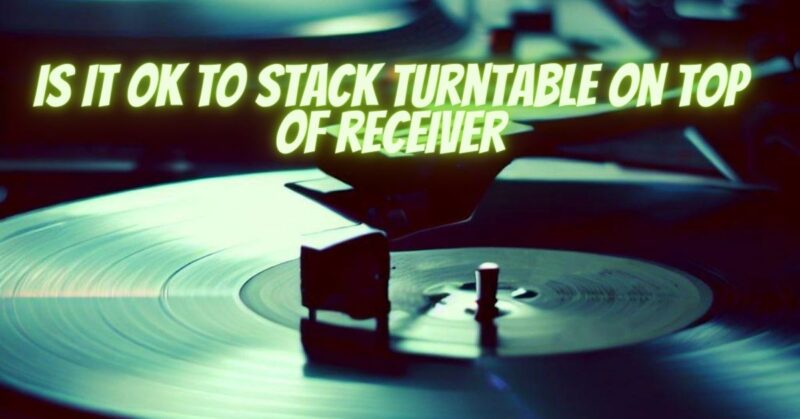When setting up your audio equipment, you may wonder whether it is safe or advisable to stack a turntable on top of a receiver. While it may seem convenient to save space by stacking components, it is essential to consider certain factors to ensure optimal performance and safeguard your equipment. In this article, we will explore the considerations associated with stacking a turntable on top of a receiver.
- Vibrations and Interference: One of the primary concerns when stacking audio equipment is the potential for vibrations and interference. Turntables are sensitive to vibrations, which can affect the accuracy of the stylus tracking the record grooves. Receivers, on the other hand, generate heat and can cause vibrations due to cooling fans or internal components. Placing a turntable directly on top of a receiver increases the risk of these vibrations transferring to the turntable and compromising playback quality.
- Heat Dissipation: Receivers generate heat during operation, and proper heat dissipation is crucial for their optimal performance and longevity. Placing a turntable on top of a receiver can impede the flow of air around the receiver, potentially causing overheating issues. Heat buildup can negatively affect the internal components and lead to performance problems or even component failure.
- Stability and Weight: Consider the stability and weight distribution of your setup. Turntables are precision instruments that require a stable and level surface to function properly. Placing a turntable on top of a receiver may introduce instability, especially if the receiver is not designed to support the weight of the turntable. An unstable setup can result in unwanted vibrations, record skipping, or even equipment damage if it tips over.
- Space and Isolation: While space-saving is a consideration, it is important to provide adequate space and isolation for each component. Stacking a turntable on top of a receiver can limit airflow and create electromagnetic interference between the components. Proper spacing between the turntable and receiver allows for better heat dissipation and minimizes the risk of interference.
- Alternatives: If space is a concern, consider alternative placement options. You can position the turntable adjacent to the receiver on a separate shelf or stand, ensuring proper spacing and stability. This arrangement allows for easier cable management, adequate airflow, and reduced interference between components.
- Isolation Solutions: To mitigate vibrations and interference, you can use isolation solutions such as equipment isolation pads or stands designed to absorb vibrations and provide additional stability. These accessories can help reduce the transfer of vibrations between the turntable and receiver, improving overall performance.
Conclusion:
While it may be tempting to stack a turntable on top of a receiver for space-saving purposes, it is crucial to consider the potential risks and compromises in performance. Vibrations, heat dissipation, stability, and interference are significant concerns when stacking audio equipment. Whenever possible, opt for separate placement of the turntable and receiver, ensuring proper spacing, stability, and airflow. If stacking is necessary, use isolation solutions to minimize vibrations and consider the weight-bearing capacity of the receiver. By taking these considerations into account, you can ensure optimal performance and prolong the lifespan of your audio equipment.

